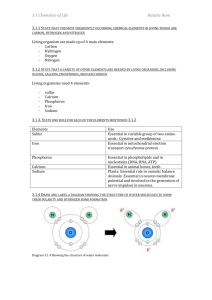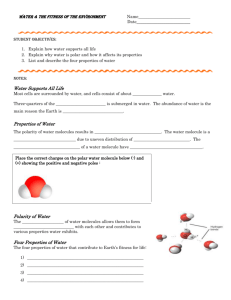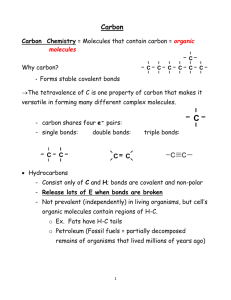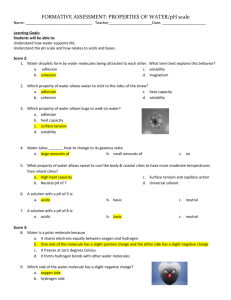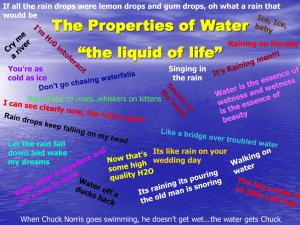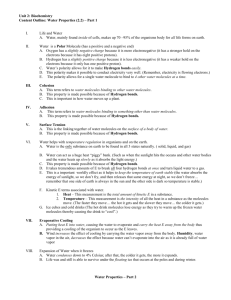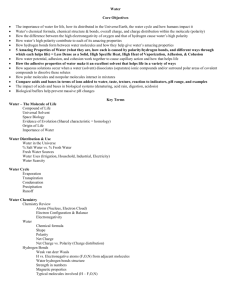Assessment Answer Key
advertisement
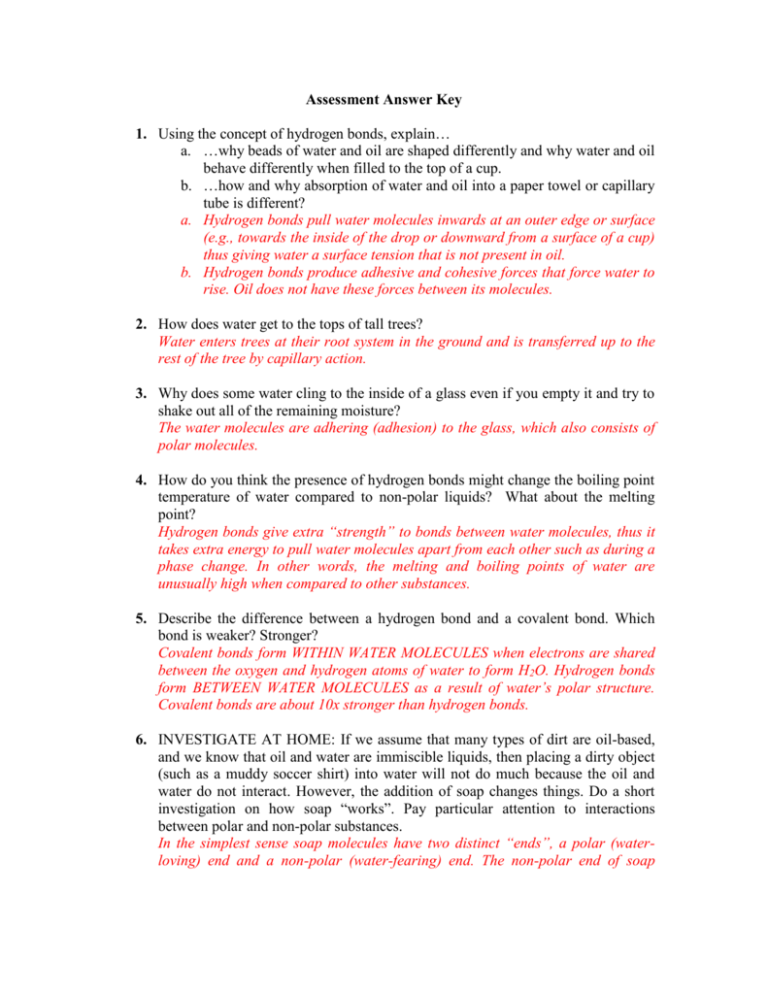
Assessment Answer Key 1. Using the concept of hydrogen bonds, explain… a. …why beads of water and oil are shaped differently and why water and oil behave differently when filled to the top of a cup. b. …how and why absorption of water and oil into a paper towel or capillary tube is different? a. Hydrogen bonds pull water molecules inwards at an outer edge or surface (e.g., towards the inside of the drop or downward from a surface of a cup) thus giving water a surface tension that is not present in oil. b. Hydrogen bonds produce adhesive and cohesive forces that force water to rise. Oil does not have these forces between its molecules. 2. How does water get to the tops of tall trees? Water enters trees at their root system in the ground and is transferred up to the rest of the tree by capillary action. 3. Why does some water cling to the inside of a glass even if you empty it and try to shake out all of the remaining moisture? The water molecules are adhering (adhesion) to the glass, which also consists of polar molecules. 4. How do you think the presence of hydrogen bonds might change the boiling point temperature of water compared to non-polar liquids? What about the melting point? Hydrogen bonds give extra “strength” to bonds between water molecules, thus it takes extra energy to pull water molecules apart from each other such as during a phase change. In other words, the melting and boiling points of water are unusually high when compared to other substances. 5. Describe the difference between a hydrogen bond and a covalent bond. Which bond is weaker? Stronger? Covalent bonds form WITHIN WATER MOLECULES when electrons are shared between the oxygen and hydrogen atoms of water to form H2O. Hydrogen bonds form BETWEEN WATER MOLECULES as a result of water’s polar structure. Covalent bonds are about 10x stronger than hydrogen bonds. 6. INVESTIGATE AT HOME: If we assume that many types of dirt are oil-based, and we know that oil and water are immiscible liquids, then placing a dirty object (such as a muddy soccer shirt) into water will not do much because the oil and water do not interact. However, the addition of soap changes things. Do a short investigation on how soap “works”. Pay particular attention to interactions between polar and non-polar substances. In the simplest sense soap molecules have two distinct “ends”, a polar (waterloving) end and a non-polar (water-fearing) end. The non-polar end of soap breaks-up the dirt/oil and surrounds it; the polar end is then flushed away with running water…taking the dirt trapped at the non-polar end along with it.




